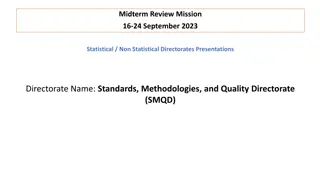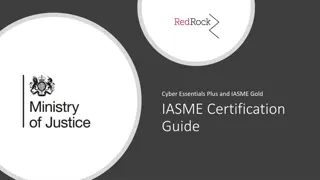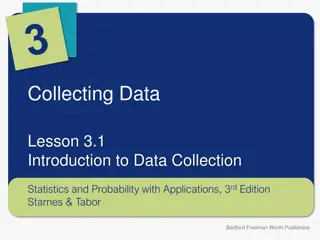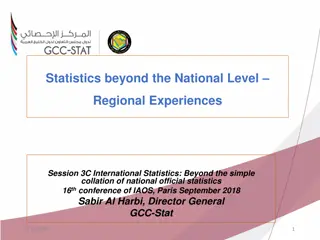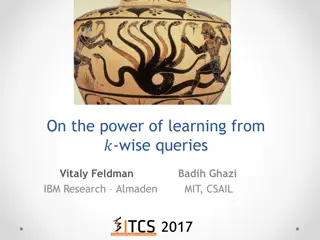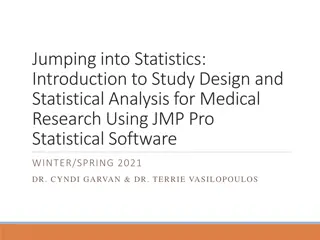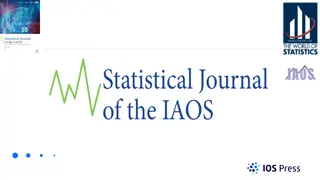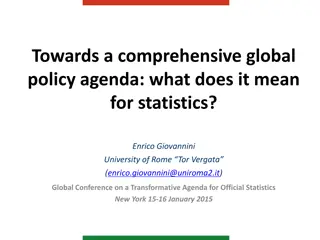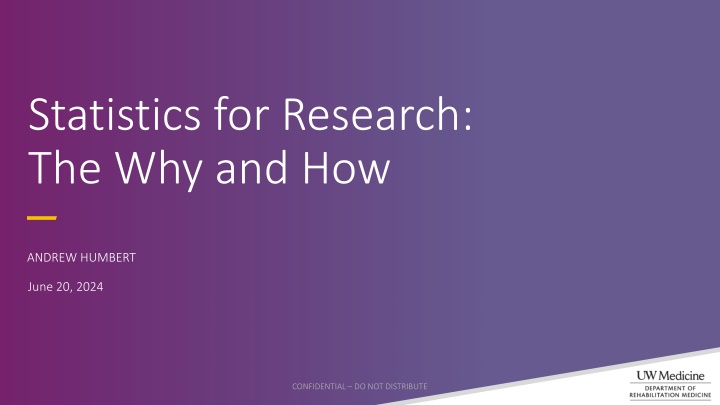
Understanding Statistics for Research: A Practical Guide
Discover the significance of statistics in research and how they help draw conclusions. Learn about point estimates, variability, confidence intervals, and more in making informed decisions based on data analysis.
Download Presentation

Please find below an Image/Link to download the presentation.
The content on the website is provided AS IS for your information and personal use only. It may not be sold, licensed, or shared on other websites without obtaining consent from the author. If you encounter any issues during the download, it is possible that the publisher has removed the file from their server.
You are allowed to download the files provided on this website for personal or commercial use, subject to the condition that they are used lawfully. All files are the property of their respective owners.
The content on the website is provided AS IS for your information and personal use only. It may not be sold, licensed, or shared on other websites without obtaining consent from the author.
E N D
Presentation Transcript
Statistics for Research: The Why and How ANDREW HUMBERT June 20, 2024 CONFIDENTIAL DO NOT DISTRIBUTE
Motivation Can a new app increase the amount of physical activity following a traumatic brain injury? We know the app probably won t help everyone But will it provide an average benefit? We could conduct a randomized clinical trial How will statistics be used to make conclusions about the study?
Statistics in four measures Point estimate Variability Confidence interval P-value
Point Estimate The single best guess based off our sample Often the average or proportion May be the difference between two groups Example: Those given the app had 15 minutes more physical activity per week However, a different sample may have a different estimate! A different sample may have only had a 10-minute difference Another may have had a 17-minute difference
Variability We know the estimates from different samples will vary Can we quantify this? Standard error The more variable individuals are, the higher the standard error The larger our sample size, the smaller the standard error
Confidence Intervals Give us a range in which we are confident the true value lies Usually, 95% confidence is chosen 95% of all intervals created this way will contain the true value 5% won t We never know if we are in the 95% or 5% Example: If our 95% confidence interval is 10-20 We are 95% confident that the true impact of the app is 10-20 minutes
P-value We often want to know how unlikely our results are due to chance Recall: A treatment may look effective in a sample by chance even if it isn t! We first need to imagine a scenario where there is no treatment effect I know the treatment doesn t work We then see how frequently our results (or more extreme) would occur until this scenario We can calculate this theoretically or through simulations This is the p-value! Usually anything less than 5% is considered statistically significant
Summary Statistics helps us use a sample to make conclusions about a population Point estimates: Single best guess Variability: How much our point estimate differs if we could resample Confidence intervals: Range that we are confident contains the true value P-values: How likely our results are to occur by chance if no effect is present


